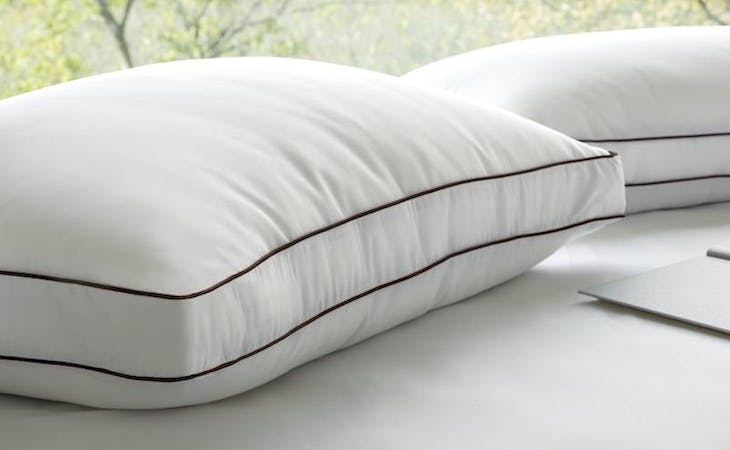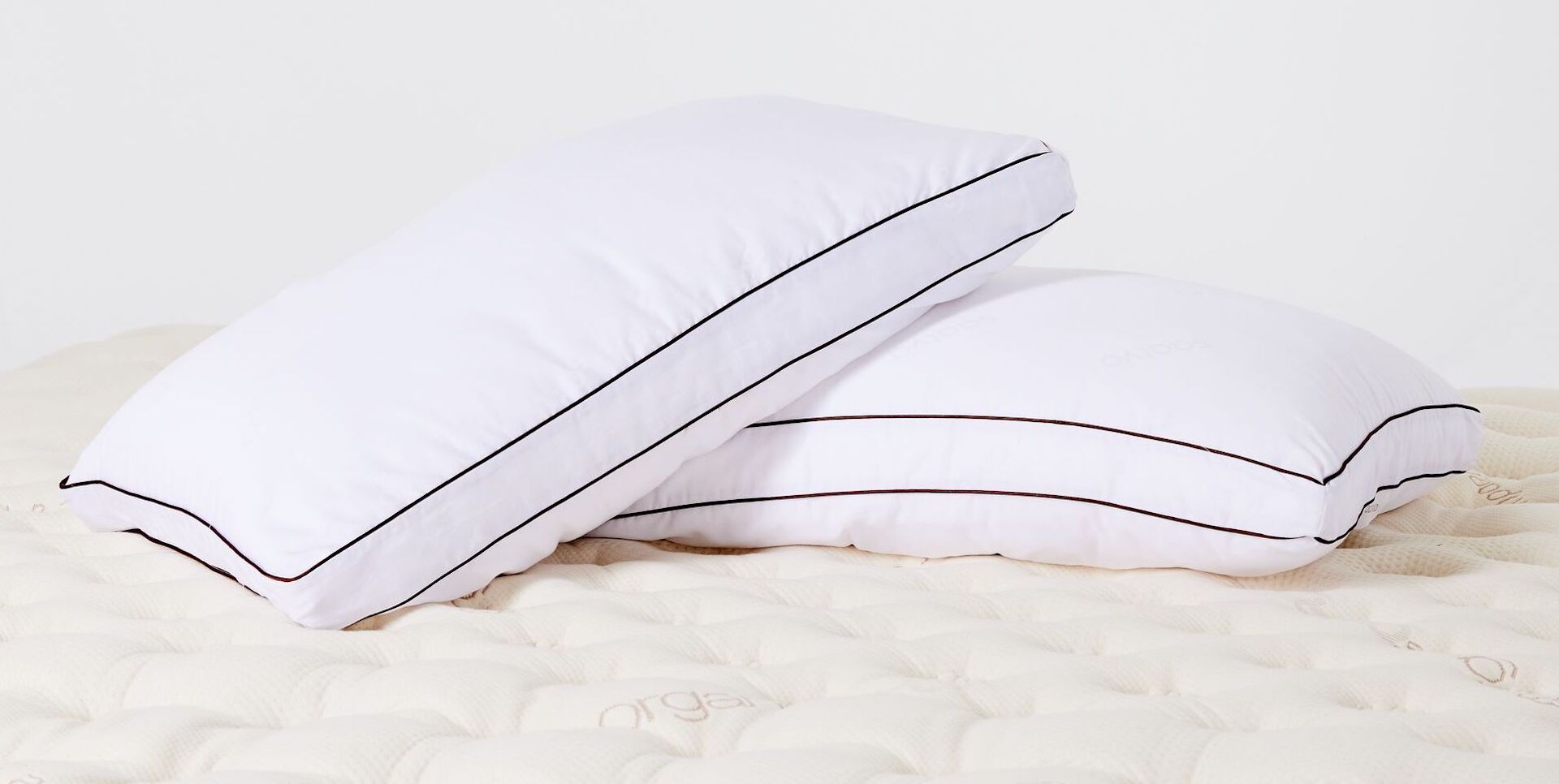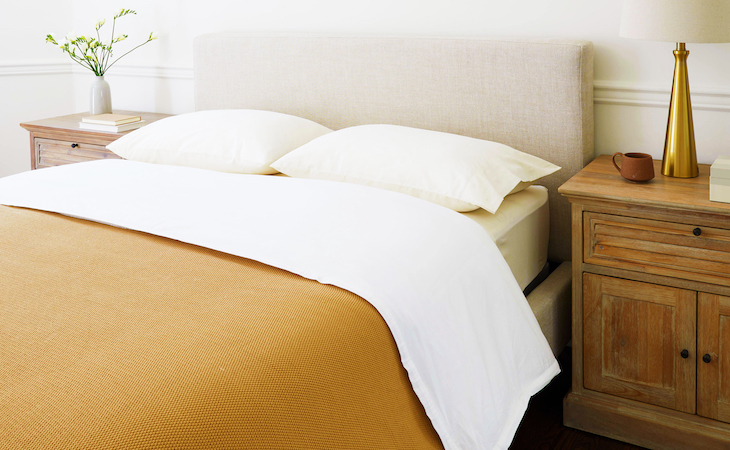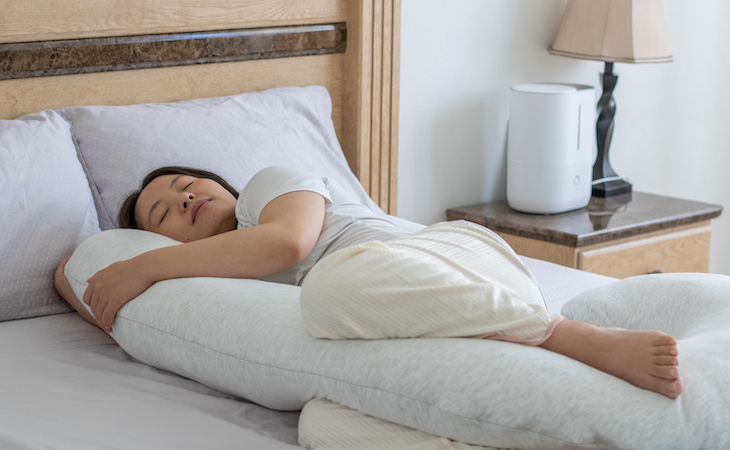The same thing that makes latex such a great mattress material also makes it ideal for pillows. But even among latex pillows, you have choices: solid or shredded? Dunlop or Talalay? Natural or synthetic? If you’re thinking about trying a latex pillow, here’s some information that can help you find the one that’s best for you.
What is a latex pillow?
A latex pillow is a pillow made from all-natural latex, derived from the sap of the rubber tree. Natural latex is conforming yet responsive, durable, and hypoallergenic.
Benefits of a latex pillow
What sets latex apart from other pillow fillings? Here are the top three benefits of sleeping on a latex pillow:
Latex pillows help relieve neck pain
Since latex is a very buoyant and responsive material, it promotes proper spinal alignment and provides excellent head and neck support for different sleeping positions.
Latex pillows are healthy for you
A natural material, latex is antibacterial and resistant to mildew, dust mites, and other allergens, making it ideal for those with allergies (apart, of course, from the very small percentage of people who are allergic to latex).
Latex pillows sleep cool
Latex is also great if you tend to sleep hot. Because it has an open-cell structure, latex is extremely breathable and sleeps cooler than memory foam.
What kind of latex pillow is right for you?
When buying a latex pillow, look for one that is 100% natural latex. Latex blend pillows are mixed with polyurethane foam, which doesn’t perform the same way or have the same beneficial qualities as natural latex.
Within the natural latex category, you’ll find two different types: Dunlop and Talalay, each with a distinct feel. Latex in pillows is also typically either shredded or solid. Here’s what that means in practical terms.
Dunlop latex vs. Talalay latex
Dunlop and Talalay refer to two different processes of turning liquid latex into foam. The Dunlop method has been used since the late 1920s, while the Talalay method was developed during World War II.
Both methods start the same way, with the liquid sap of the rubber tree, which is sustainably harvested and sent to a production facility, where it is mixed with a small amount of non-toxic, inorganic ingredients and whipped into an airy batter. To make Dunlop latex, the mixture is poured into a mold and baked into a solid form.
The Talalay process adds a couple of steps. After the batter is poured into the mold, a vacuum is created to evenly disperse the liquid latex throughout the mold. Then it’s flash-frozen to ensure consistent cell structure. After that, it’s baked into solid form. The vacuum and flash-freezing stages ensure a consistent feel throughout the latex.
Both options offer comfortable, cool sleep. However, keep in mind that due to the intensive production process, Talalay is often the more expensive option.
Solid latex vs. shredded latex
Latex pillows can be made with a solid or shredded latex core. Pillows made from solid latex are a bit denser and are often contoured, while those made with shredded latex tend to be more malleable and have slightly better airflow. Both types of latex pillows will give you great head and neck support, so the choice is a matter of personal preference.
Related: How to pick the right pillow for your best night’s sleep
How do you clean a latex pillow?
The core of a latex pillow should never be put in a washing machine and certainly never in a dryer. You should always follow the instructions and maintenance guides that are attached to your pillow.
If there are stains on your latex pillow, take a cloth, soak it in water mixed with mild detergent, and wring it dry. Use it to blot stains, then wrap the pillow in fresh dry towels to get rid of excess moisture. Dry it flat and away from direct sunlight.
You should wash your pillow (following the manufacturer’s instructions) twice a year. A high-quality latex pillow should last you four years or more.
How much does a latex pillow cost?
Because of the labor involved in harvesting and processing the material, a natural latex pillow is a more expensive option than some other types. A good quality natural latex pillow will cost between $100 and $150 for a queen or king size.
When shopping for a pillow, keep your sleep style in mind. Here’s how to find the best pillow for your sleep position.





